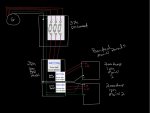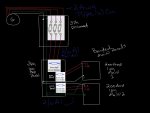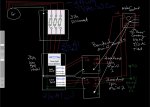Tommytone
Member
- 56
- 44
- 18
- Location
- Ashland, ohio
I have an 805B we are working to get running and are planning out the connections to the house.
We have a split 400 amp set up with (2) 200 amp panels.
To use the 805B to the fullest it made sense to install a three phase 100 amp panel and feed the 200 amp panels from there. That would allow use of all 3 legs with one being used twice. The panels have manual lockouts preventing the main and generator breakers from being on at the same time.
My question is what, if any issues, could there be here. My only thought is that, since the panels are tied in the meter box, if ever the main and generator feed were both on you would have a short. The lockouts should prevent this.
Any thought?
We have a split 400 amp set up with (2) 200 amp panels.
To use the 805B to the fullest it made sense to install a three phase 100 amp panel and feed the 200 amp panels from there. That would allow use of all 3 legs with one being used twice. The panels have manual lockouts preventing the main and generator breakers from being on at the same time.
My question is what, if any issues, could there be here. My only thought is that, since the panels are tied in the meter box, if ever the main and generator feed were both on you would have a short. The lockouts should prevent this.
Any thought?






